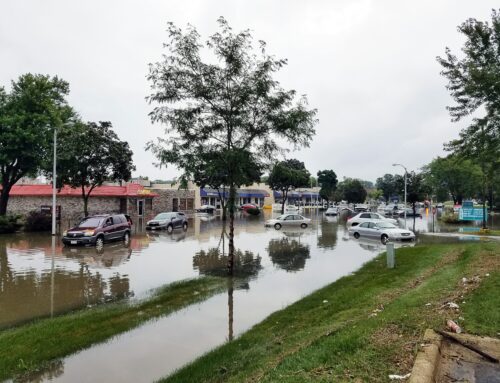Yet again we are reacquainted with flooding from the “Father of Waters,” or “Ol Man River,” – the mighty Mississippi. Just like 2008, 1995, 1993, 1973, 1950, 1945, 1937, or 1927, or 1543, when the De Soto expedition observed “little by little [the Mississippi River] rose to the top of the cliffs. Soon it began flow over the fields in an immense flood and … there was nothing to stop the inundation.”
What starts in Minnesota as a wadeable stream, eventually drains more than 40 percent of the lower 48 from the Rockies to the Appalachians. When the Illinois and Missouri Rivers join, the Mississippi doubles in size. After the confluence with the Ohio, it doubles again. The Mississippi flooding Memphis is twice the river that flooded the St. Louis area, and four times the size of the one that flows past Minneapolis.
Why does this matter to taxpayers?
Because since the 19th century, and especially after 1927, we have spent billions and billions of dollars trying to prevent flooding from the Mississippi River and its tributaries, while simultaneously racking up billions of dollars in losses. The river is winning. The river always wins.
In fact, nationwide the average annual loss due flooding was $2.6 billion during the first half of the 20th century. It increased to $4.5 billion for the second half and $6.2 billion for the ten years between 1995 and 2004 (constant 2004 dollars). Not much of a return on investment.
This is not to say we should abstain from providing flood protection to communities and critical infrastructure. But instead of simply spending more, we need to spend wisely.
A century’s experience has taught us that while we can cost-effectively build protection against small and even medium sized flooding events, the big ones are always going to come. And when they do, we will pay dearly. In addition, we have seen that floodplains and rivers are systems, where development or levees upstream (or downstream) impact water flow and flood heights in adjacent areas. The Corps of Engineers knows this. That’s why they opened floodways along the river to reduce flood heights in other areas.
Yet despite this, special interests continue fighting against reality. For example the Corps and others, for years, fought to complete a project that would have effectively closed the naturally occurring New Madrid floodway in Missouri. This project would have opened up more land for agricultural production. But doing so also meant an even greater number of lives and property would have been devastated when, not if, the floodway was activated to protect Cairo, Illinois from the next record flood.
Though unwelcome, flooding provides an opportunity to help communities and structures to be more resilient in future. The key is working with the river. Buying out property in the floodplain so it never floods again, setting back levees, and using natural systems to lower flood heights and protect vulnerable communities and vital infrastructure, are how we can save lives, protect property, and reduce the costs of inevitable flooding.
Just two years after the Great Midwest Flood of 1993, so-called once-in-a-lifetime floodwaters returned to devastate many of the areas still struggling to recover. But not to the previously frequently flood towns of Arnold, MO and Valmeyer, IL – both of these small river valley towns had been relocated to higher ground and the citizens could watch the flooding with dry feet.
After the Mississippi River Commission was formed in the 19th century to deal with flooding issues, Mark Twain observed “One who knows the Mississippi, will promptly aver … that ten thousand river commissions cannot tame that lawless stream, cannot curb it or confine, cannot say to it, Go here, or Go there, and make it obey; cannot save a shore which it has sentence; cannot bar its path with an obstruction which it will not tear down, dance over, and laugh at.”
So instead of simply opening up our wallet when the floodwaters recede, taxpayers need to demand accountability from federal agencies, states, communities and individuals. Especially considering the country’s dire fiscal situation ($1.65 trillion deficit in fiscal year 2011), we cannot afford to continue to bury our collective heads in the levees.
###
TCS QUOTE OF THE WEEK:
“Washington is a great place to talk about problems. But as soon as someone starts proposing solutions, everyone attacks the person. We can all either yell at each other, or we can sit down at the table.”
– Rep. James Lankford (R., Okla.). The Wall Street Journal











Get Social